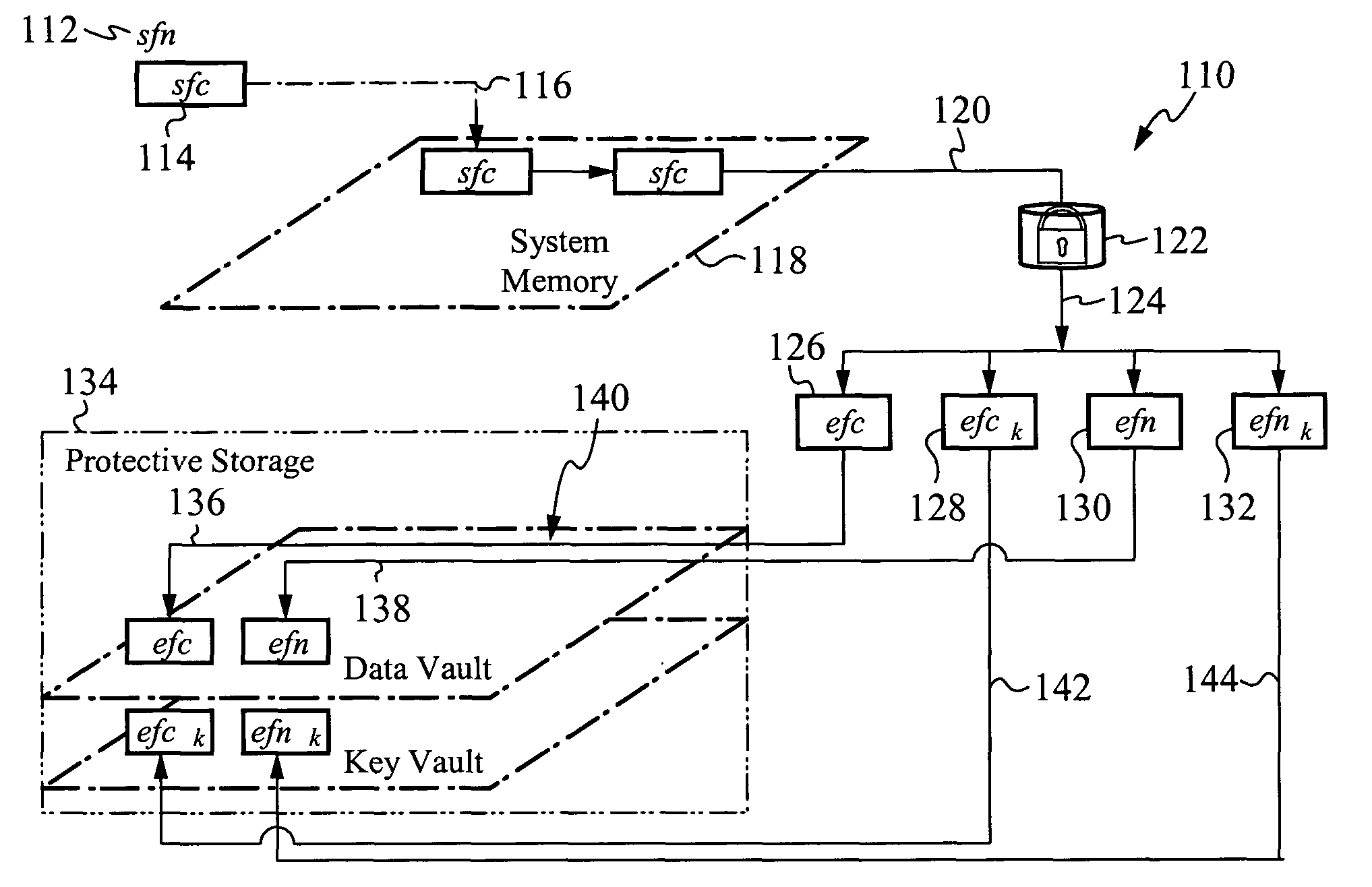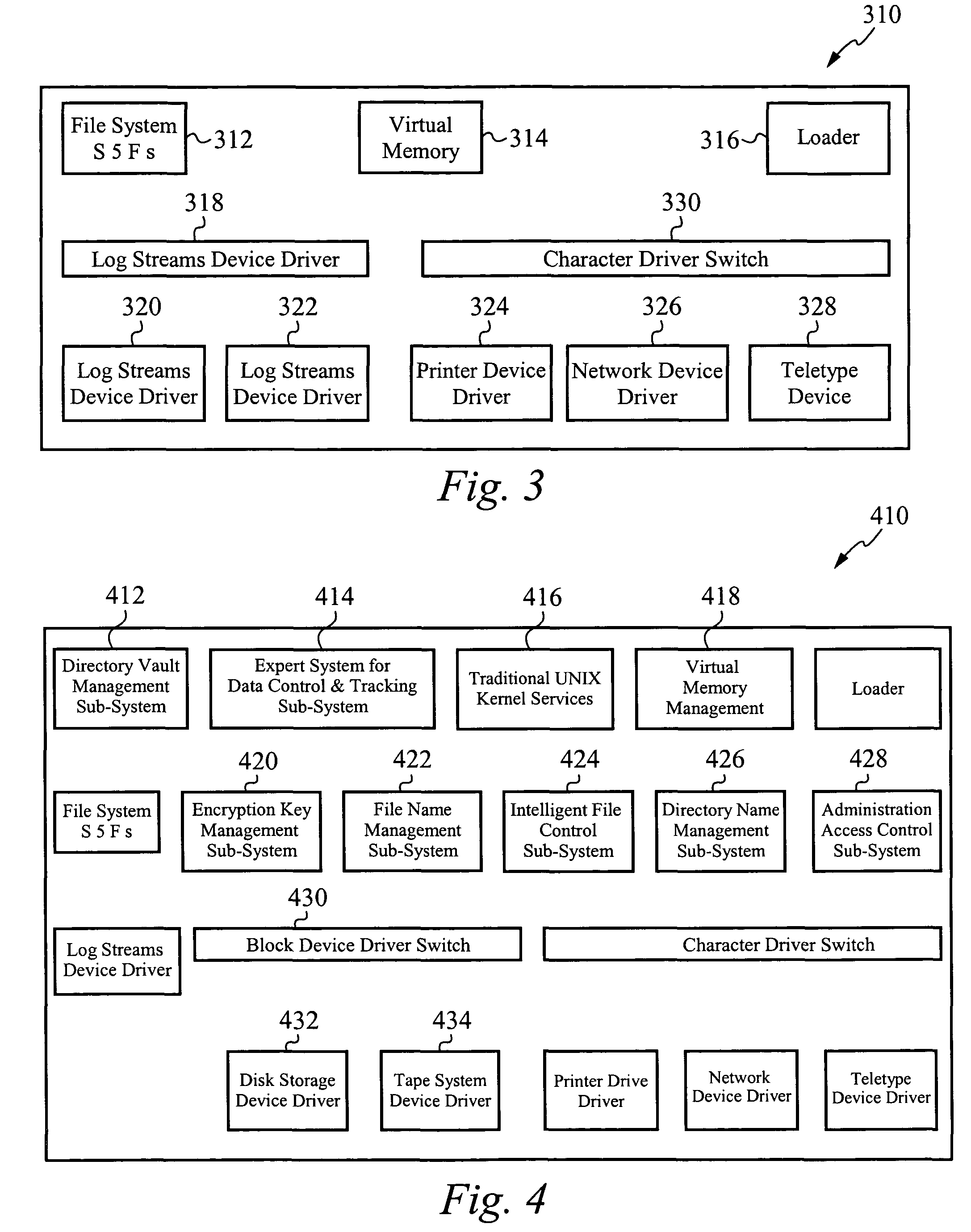Encrypting operating system
an operating system and encryption technology, applied in the field of computer operating systems, can solve the problems of malicious damage to the operation data security and affecting the overall security of the computer system as a whole,
- Summary
- Abstract
- Description
- Claims
- Application Information
AI Technical Summary
Benefits of technology
Problems solved by technology
Method used
Image
Examples
Embodiment Construction
[0051]In the following description, identical numbers indicate identical elements. Where an element has been described in one Figure, and is unaltered in detail or relation in any other Figure, said element description applies to all Figures.
[0052]The present invention, termed an Encrypting Operating System (EOS), is a modified UNIX operating system. The EOS is not restricted in operation to a particular UNIX operating system, although its preferred embodiment is based on the architecture of the AT&T UNIX SVR3.4, SVR4, SVR4.2, and SVR5 operating system kernel. For purposes of clarity and consistency, the following description will be restricted to the description of an EOS that is a modified AT&T UNIX SVR4 operating system kernel, but it should be understood that it is within the scope of the present invention to produce the EOS by modifying other UNIX operating systems.
[0053]Preferably, the EOS is part of a micro-kernel, such as those found in UNIX System V configurations, includin...
PUM
 Login to View More
Login to View More Abstract
Description
Claims
Application Information
 Login to View More
Login to View More - R&D
- Intellectual Property
- Life Sciences
- Materials
- Tech Scout
- Unparalleled Data Quality
- Higher Quality Content
- 60% Fewer Hallucinations
Browse by: Latest US Patents, China's latest patents, Technical Efficacy Thesaurus, Application Domain, Technology Topic, Popular Technical Reports.
© 2025 PatSnap. All rights reserved.Legal|Privacy policy|Modern Slavery Act Transparency Statement|Sitemap|About US| Contact US: help@patsnap.com



